《Journal of Zhejiang University-Science B(Biomedicine Biotechnology)》is an international "Biomedicine & Biotechnology" reviewed-Journal indexed by SCI-E, MEDLINE, PMC, BA, BIOSIS Previews, JST, ZR, CA, SA, AJ, ZM, CABI, CSA, etc., and supported by the National Natural Science Foundation of China. It mainly covers research in Biomedicine, Biochemistry and Biotechnology, etc.
The categories of frequently published articles in Journal of Zhejiang University-SCIENCE B (Biomedicine & Biotechnology) (JZUS-B for short) include, but are not limited to, Preview, Perspective, Article, Review or Mini-review, Correspondence, and Editorial.
《Journal of Zhejiang University-Science B(Biomedicine Biotechnology)》荣获2009–2010年度国家自然科学学术期刊专项基金资助。
科学快报、研究论文、综述
1、All materials must adhere to high ethical and animal welfare standards. Any use of animals must be based on ethological knowledge and respect for species- specific requirements for health and well-being. For investigations of human subjects, an appropriate institutional review board approved the project and the informed consent was obtained from the study participants.
2、Preview
Preview, also known as "Communication" or "Letter", is to rapidly and concisely present a preliminary study, which has innovative research findings or a novel idea, but might be less substantial than a full research article. Previews should have no more than 2000 words (excluding references and figure legends) and 2 display items (figures and/or tables). There is no ab-stract, but the opening paragraph should provide enough information to attract reader's attention and allow them to understand the study. Previews may be commissioned or unsolicited submissions, and will be peer-reviewed and published as a high priority.
3、Perspective
Perspective is to give an opinion on virtually any important popular topic. We welcome a personal viewpoint on new advances or giving fresh insights. Viewpoints should be well focused, scholarly, and clearly presented. Maximum length is up to 2000 words (excluding references and figure legends), with 2 display items (figures and/or tables). There is no abstract, but the opening paragraph should provide your readers with sufficient information. Perspectives may be commissioned or unsolicited submissions, and will be peer-reviewed and published as a high priority.
4、Article
Article is a substantial novel research study. It is written by the researchers who actually conducted the study and reviewed by international peer scholars. The researchers describe the research question and the purpose of the study in the Introduction, detail their methods in Materials and Methods, report the findings in Results, and interpret the results and implications in Discussion, followed by genuine conclusions, which are not just a repeat of the abstract or summary of results. A structured abstract should have 150-300 words. An article may have up to 10 display items (figures and/or tables). Conciseness is encouraged, while currently there is no length limit on a research article. Additional related materials, if necessary, may be provided as electronic supplementary materials. Authors are required to provide a competing financial interests, ethics, and author contributions statement.
5、Review or Mini-review
Review or Mini-review should be authoritative and of high interest. A review normally has some 5000 words, while some 3000 words are required for a mini-review, excluding references and figure legends. Display items (figures and/or tables) are welcomed. An abstract should have 100-200 words. Authors are required to provide a competing financial interests statement. Leading researchers are encouraged to write high-quality reviews in their fields. Reviews may be commissioned or unsolicited submissions and are reviewed by international peer scholars.
6、Correspondence
Correspondence, also known as "Letter to the Editor", covers a wide variety of contents, which are too brief to be published as abovementioned article categories. The authors can provide rapid and concise report of important findings, discuss controversial and interdisciplinary topics or any other issues of interest, or give some comments on papers previously published. It is limited to 1500 words and 15 references. Only 1-2 display items (figures and/or tables) are allowed. There is no abstract or any subsections; nevertheless, the opening paragraph should present concise but yet sufficient information to give the reader a basic overview. Additional related materials, if necessary, may be provided as electronic supplementary materials. Correspondence will be reviewed by Editorial Board members and published as a high priority.
7、Editorial
Editorial is written by members of the editorial board of JZUS-B, the journal editors, guest editor(s) of a special issue, or invited distinguished scholars. Editorials are meant to influence public opinion, promote critical thinking, and sometimes cause people to take action on an issue.
8、Paper Format Requirements
The electronic manuscript should be prepared to accord with the following:
(1)Title and by-line:
Name, affiliation (institution) of the author(s), city, zip code, country, and email address of the author(s) should be given.
(2)Abstract:
About 150–250 words should outline the objective, method, main results, and conclusion without mathematical, equations, or cited marks.
(3)Key words:
Provide 3 to 6 key words or phrases for cross-indexing this article.
(4)Text:
The text should contain an Introduction that puts the paper into proper perspective for the reader, and should also contain Methods, Results, Discussion, and Conclusion sections.
(5)Acknowledgements:
Individuals or units other than authors who were of direct help in the work should be acknowledged by a brief statement following the text.
(6)References & Citation:
Personal communications and unpublished data are not acceptable references. Periodicals should be referred to in the Author-Data order: name of author(s), year, title of paper, name of periodical (in italics), Vol.(No.): pages, [DOI]. Books should be referred to in the order: name of author(s), year of publication, title of book, publishing house, city, pages. All authors in the references should be listed. The citation form of the author-date in the text consists of the author?s last (family) name. a comma, and the year of publication of the work.
(7)Text citation examples:
One author: (Vandermeer, 1990)
Two authors: (Sun and Wang, 2000; Cao and Xu, 2001)
Three or more authors: (Moons et al., 1997; Schlag et al., 2000a; 2000b)
(8)Reference list examples:
①For journal articles
Hengartner, M.G., 2000. The biochemistry of apoptosis. Nature, 407(6805):770-775. [doi:10.1038/35037710]
Schroder, W.J., Zerge, J.A., Lorensen, W.E., 1992. Decimation of triangle meshes. ACM SIGGRAPH Computer Graphics, 26(2):65-70. [doi:10.1145/142920.134010]
②For proceedings
Gorini, S., Quirini, M., Menciassi, A., Permorio, G., Stefanini, C., Dario, P., 2006. A Novel SMA-based Actuator for a Legged Endoscopic Capsule. First IEEE/RAS-EMBS International Conference on Biomedical Robotics and Biomechatronics, Pisa, Italy. IEEE, Piscataway, USA, p.443-449. [doi:10.1109/BIOROB.2006.1639128]
③For whole books/monographs or chapters in edited books
Gregersen, H., 2006. Biomechanics of the Gastrointestinal Tract. People's Medical Publishing House, Beijing, China, p.216-236 (in Chinese).
Prigogine, I., 1976. Order through Fluctuation: Self-organization and Social System. In: Jantsch, E., Waddington, C. (Eds.), Evolution and Consciousness: Human Systems in Transition. Addison-Wesley, London, p.93-134.
④For theses
Rizvi, U.H., 2006. Combined Multiple Transmit Antennas and Multi-level Modulation Techniques. MS Thesis, Royal Institute of Technology, Stockholm, Sweden.
⑤For reports
Sweeney, L., 2000. Uniqueness of Simple Demographics in the U.S. Population. Technical Report No. LIDAP-WP4, Laboratory for International Data Privacy, Carnegie Mellon University, PA.
9、Figures & Tables:
Figures must be placed in the text and have their captions for each one, thus Fig. 1a, Fig. 1b, etc. (There will be an extra charge for those graphics considered for publication in color. Authors are expected to use different line types to distinguish the different parts of a figure that they do not want to have published in color).
All tables must be mentioned in the text in consecutive order and must be numbered with Arabic numbers.
2012 2013 2014 2015 2016 2017 2018 2019 2020 2021 2022
本刊文章发表的年份
在2012年的被引次数
被本刊自己引用的次数
被引次数的累积百分比
本刊文章发表的年份
在2013年的被引次数
被本刊自己引用的次数
被引次数的累积百分比
本刊文章发表的年份
在2014年的被引次数
被本刊自己引用的次数
被引次数的累积百分比
本刊文章发表的年份
在2015年的被引次数
被本刊自己引用的次数
被引次数的累积百分比
本刊文章发表的年份
在2016年的被引次数
被本刊自己引用的次数
被引次数的累积百分比
本刊文章发表的年份
在2017年的被引次数
被本刊自己引用的次数
被引次数的累积百分比
本刊文章发表的年份
在2018年的被引次数
被本刊自己引用的次数
被引次数的累积百分比
本刊文章发表的年份
在2019年的被引次数
被本刊自己引用的次数
被引次数的累积百分比
本刊文章发表的年份
在2020年的被引次数
被本刊自己引用的次数
被引次数的累积百分比
本刊文章发表的年份
在2021年的被引次数
被本刊自己引用的次数
被引次数的累积百分比
本刊文章发表的年份
在2022年的被引次数
被本刊自己引用的次数
被引次数的累积百分比
累积被引百分比:是用于评估期刊影响力的学术指标,是指在某一领域或学科中,某篇论文被后续的论文引用的次数占该领域或学科所有论文被引用的总次数的比例。
他刊引用次数:指在某一期刊中发表的论文被其他期刊的论文所引用的次数。该指标能够反映出该期刊的学术影响力和知名度。
本刊引用次数:被称为自引率,是指该期刊全部被引次数中,被该刊本身引用次数所占的比例。他刊引用次数和本刊引用次数一同使用,可以更全面地评估期刊的影响力和学术地位。
期刊被引半衰期:也叫“cited half-life”,是一个衡量期刊影响力的重要指标,这个指标的值越低,说明该期刊的文章越新,反之则说明该期刊的文章比较老旧。
期刊引用半衰期:指某一期刊平均引用多久以前的论文。计算方法是从当年往前累计,当引用的论文篇数达到全部的50%时,该篇论文的出版年到当年的间隔年数即为此期刊的引用半衰期。
影响因子:指该期刊近两年文献的平均被引用率,即该期刊前两年论文在评价当年每篇论文被引用的平均次数。影响因子分为复合影响因子与综合影响因子,两者都和SCI期刊的影响因子统计方法相同。
被引次数:指某篇论文在其他论文中被引用的次数,这是衡量该篇论文影响力的一个重要指标。需要明确的是,被引次数并不完全等同于论文的质量或价值。高被引论文虽然通常代表着高质量的研究成果,但也与研究主题的重要性、论文的创新性、论文的研究方法等内在因素,以及论文的可获得性、期刊的声誉等多种外在因素有关。
发文量:又称载文量,是指一本期刊在一定时间内发表的文章数量。期刊的发文量是一个重要的参考指标。如果一本期刊发文量太小,可能会让人觉得这本期刊受众较小众,或者为了提高影响因子而刻意降低发文量。然而,如果发文量过大,也需要警惕,因为这可能影响到论文的质量。
平均引文率:又称篇均引文量,是指某本期刊中带有引文的论文数量与该期刊发表论文总数的比例。这个指标可以反映出该期刊引用文献的综合能力和引文的覆盖面。
| 一级发文领域名称 | 发文量 | 被引量 |
| 医药卫生 | 1382 | 5692 |
| 农业科学 | 446 | 1949 |
| 生物学 | 426 | 1519 |
| 环境科学与工程 | 120 | 441 |
| 轻工技术与工程 | 86 | 488 |
| 文化科学 | 72 | 39 |
| 理学 | 62 | 150 |
| 化学工程 | 54 | 164 |
| 自动化与计算机技术 | 43 | 104 |
| 自然科学总论 | 23 | 9 |
| 二级发文领域名称 | 发文量 | 被引量 |
| 医药卫生 / 临床医学 | 1019 | 4258 |
| 医药卫生 / 内科学 | 321 | 1517 |
| 医药卫生 / 肿瘤 | 270 | 833 |
| 医药卫生 / 外科学 | 148 | 861 |
| 农业科学 / 畜牧兽医 | 146 | 724 |
| 医药卫生 / 基础医学 | 143 | 500 |
| 医药卫生 / 心血管疾病 | 125 | 604 |
| 医药卫生 / 中医学 | 107 | 547 |
| 农业科学 / 作物学 | 106 | 464 |
| 医药卫生 / 中药学 | 95 | 473 |
这本杂志荣获中国市长协会推荐期刊、多次被评为市优秀期刊。文章质量不错,内容纸张都挺好的,物流还算可以,每月收货时间都挺规律的。以后还会继续订阅!
Journal of Zhejiang University-Science B(Biomedicine Biotechnology审稿速度确实很快,从投到有结果不到3个月。 个人觉得该期刊的编辑蛮负责的,对问题的修改很仔细到位。审稿人给的意见也很到位 ,审得很细致。是一个不错的期刊!
Journal of Zhejiang University-Science B审稿较快,审稿流程也非常规范、严谨。该刊编辑认真负责,注重细节问题,包括标点符号均会提出意见!此外,外审老师意见也相对中肯,非常有价值,对改善文章质量帮助很大!一个非常有质量的杂志。
若用户需要出版服务,请联系出版商,地址:38 Zheda Road, Hangzhou 310027, China,邮编:310027。
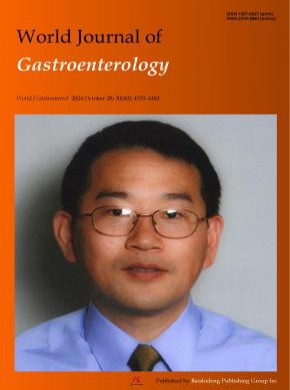
SCI期刊
人气 14454 评论 3
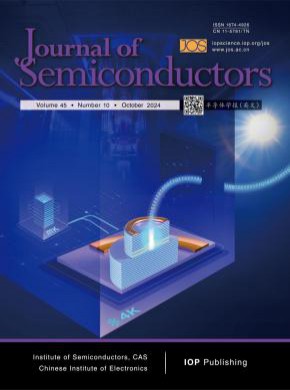
CSCD期刊、统计源期刊
人气 13427 评论 3
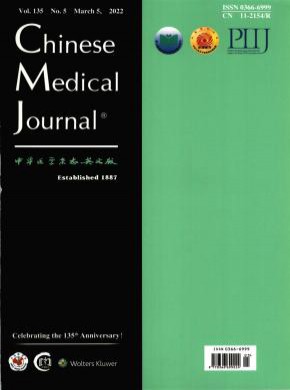
SCI期刊、CSCD期刊、统计源期刊
人气 13364 评论 8

SCI期刊、CSCD期刊、统计源期刊
人气 11573 评论 5
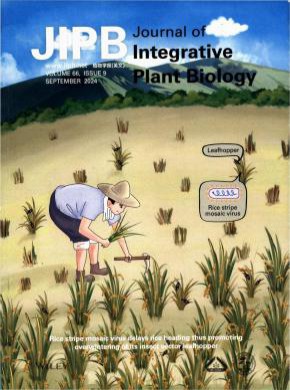
SCI期刊、CSCD期刊、统计源期刊
人气 11409 评论 3
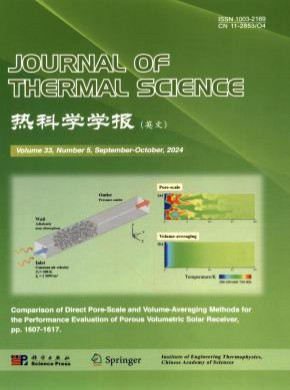
SCI期刊、CSCD期刊
人气 10880 评论 2

SCI期刊、CSCD期刊、统计源期刊
人气 10688 评论 2
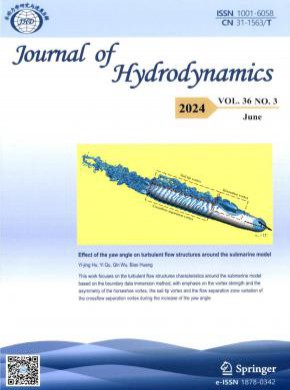
SCI期刊、CSCD期刊
人气 10528 评论 1